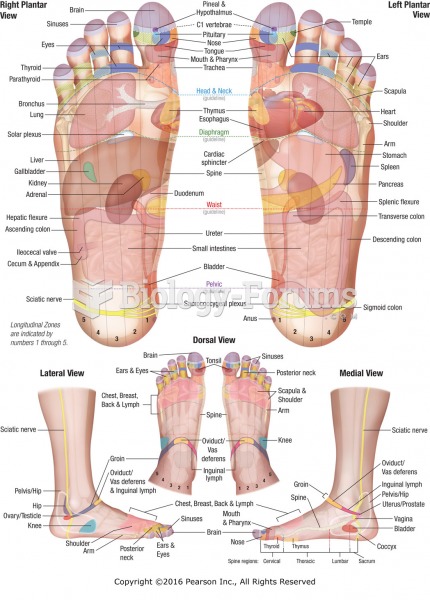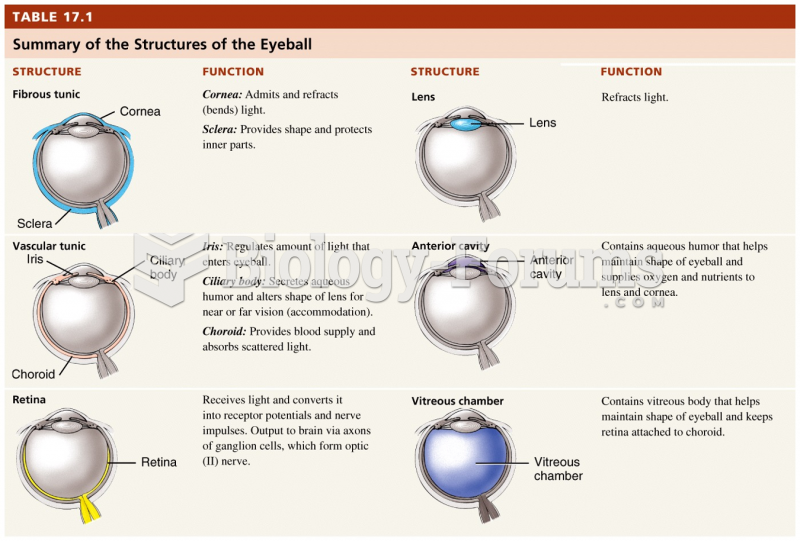|
|
|
Although not all of the following muscle groups are commonly used, intramuscular injections may be given into the abdominals, biceps, calves, deltoids, gluteals, laterals, pectorals, quadriceps, trapezoids, and triceps.
Elderly adults are living longer, and causes of death are shifting. At the same time, autopsy rates are at or near their lowest in history.
When blood is exposed to air, it clots. Heparin allows the blood to come in direct contact with air without clotting.
Cocaine was isolated in 1860 and first used as a local anesthetic in 1884. Its first clinical use was by Sigmund Freud to wean a patient from morphine addiction. The fictional character Sherlock Holmes was supposed to be addicted to cocaine by injection.
Oliver Wendell Holmes is credited with introducing the words "anesthesia" and "anesthetic" into the English language in 1846.
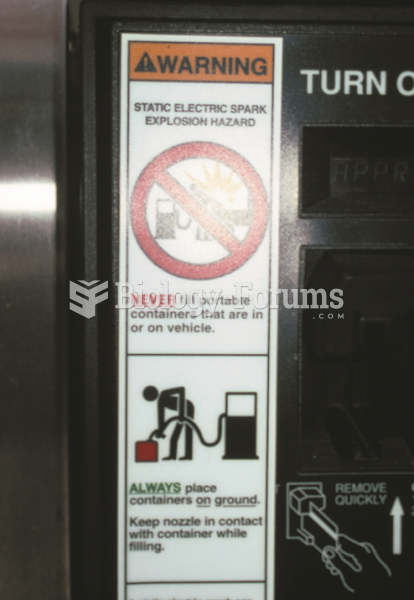 Many gasoline service stations have signs posted warning customers to place plastic fuel containers ...
Many gasoline service stations have signs posted warning customers to place plastic fuel containers ...
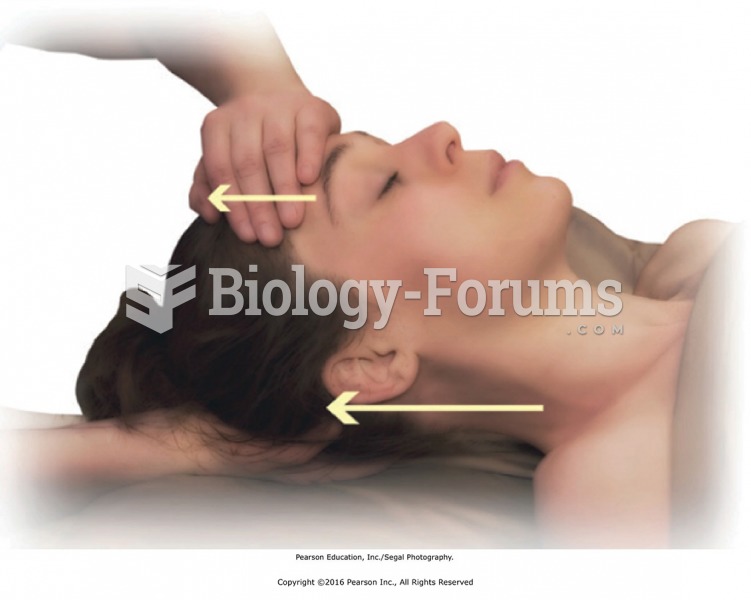 Traction the neck by placing the head, in neutral position facing upward, in one hand. Place the ...
Traction the neck by placing the head, in neutral position facing upward, in one hand. Place the ...
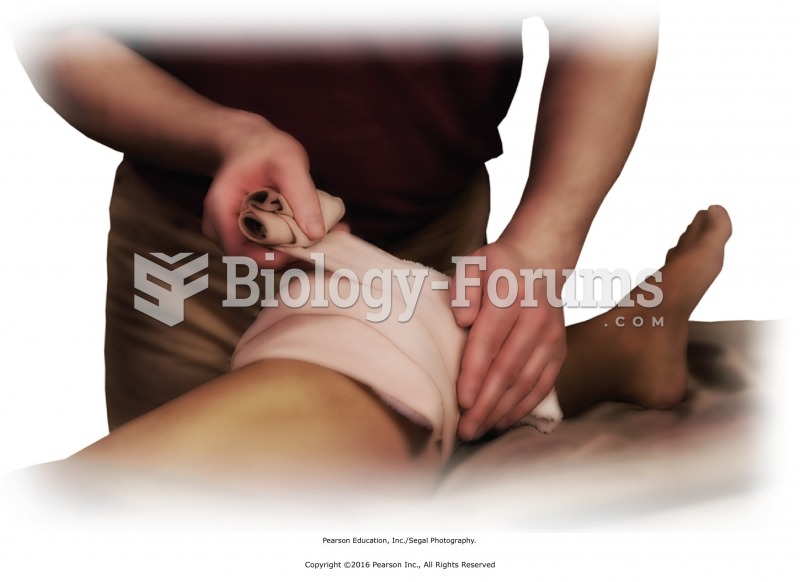 Cover and secure the cold source in place. Wrap the cold source using a towel or elastic bandage to ...
Cover and secure the cold source in place. Wrap the cold source using a towel or elastic bandage to ...


